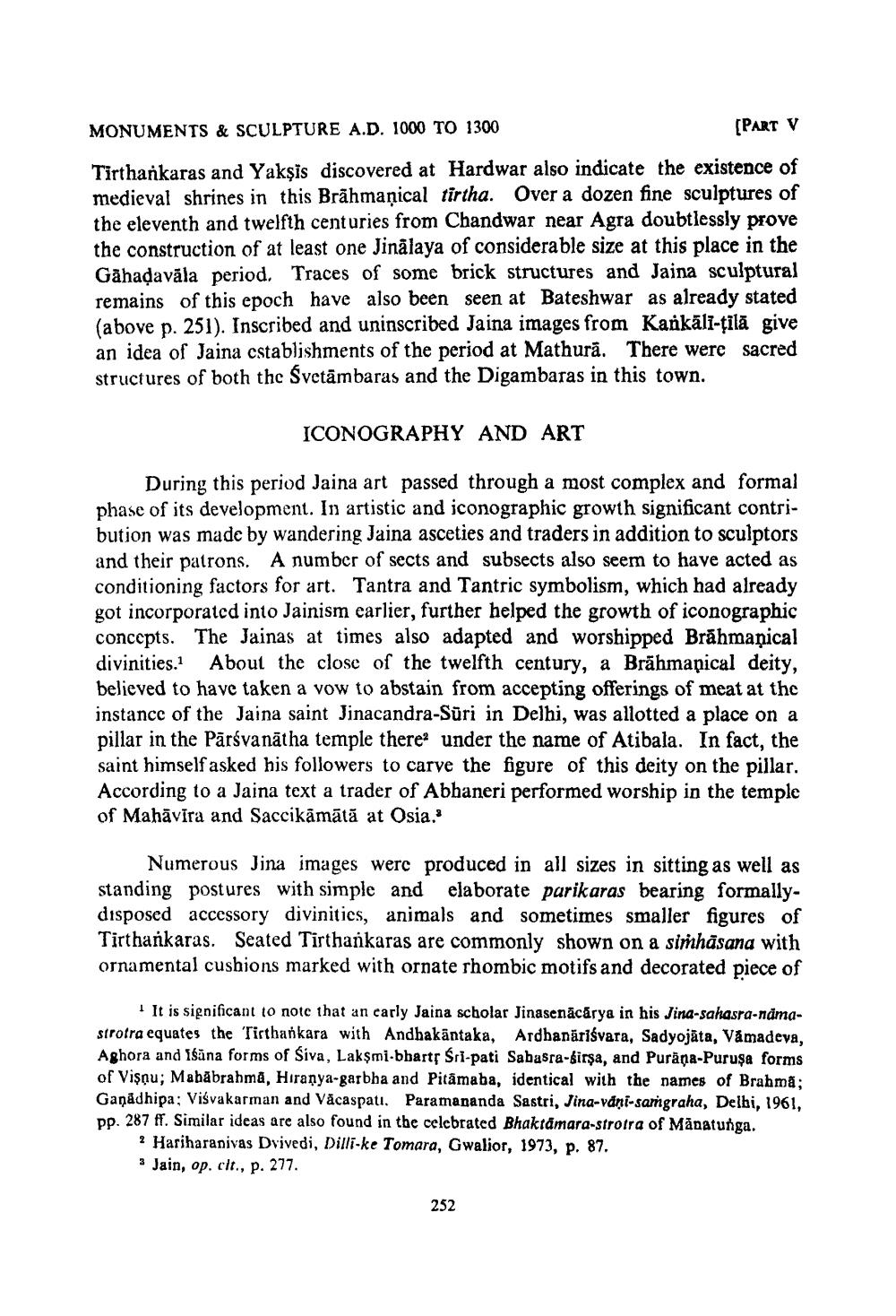________________
MONUMENTS & SCULPTURE A.D. 1000 TO 1300
[PART V
Tirthankaras and Yaksis discovered at Hardwar also indicate the existence of medieval shrines in this Brāhmaṇical tirtha. Over a dozen fine sculptures of the eleventh and twelfth centuries from Chandwar near Agra doubtlessly prove the construction of at least one Jinalaya of considerable size at this place in the Gahaḍavāla period. Traces of some brick structures and Jaina sculptural remains of this epoch have also been seen at Bateshwar as already stated (above p. 251). Inscribed and uninscribed Jaina images from Kankali-tilă give an idea of Jaina establishments of the period at Mathura. There were sacred structures of both the Svetämbaras and the Digambaras in this town.
ICONOGRAPHY AND ART
During this period Jaina art passed through a most complex and formal phase of its development. In artistic and iconographic growth significant contribution was made by wandering Jaina asceties and traders in addition to sculptors and their patrons. A number of sects and subsects also seem to have acted as conditioning factors for art. Tantra and Tantric symbolism, which had already got incorporated into Jainism earlier, further helped the growth of iconographic concepts. The Jainas at times also adapted and worshipped Brāhmaṇical divinities.1 About the close of the twelfth century, a Brahmapical deity, believed to have taken a vow to abstain from accepting offerings of meat at the instance of the Jaina saint Jinacandra-Suri in Delhi, was allotted a place on a pillar in the Pārśvanātha temple there under the name of Atibala. In fact, the saint himself asked his followers to carve the figure of this deity on the pillar. According to a Jaina text a trader of Abhaneri performed worship in the temple of Mahavira and Saccikāmātā at Osia.
Numerous Jina images were produced in all sizes in sitting as well as standing postures with simple and elaborate parikaras bearing formallydisposed accessory divinities, animals and sometimes smaller figures of Tirthankaras. Seated Tirthankaras are commonly shown on a simhasana with ornamental cushions marked with ornate rhombic motifs and decorated piece of
It is significant to note that an early Jaina scholar Jinasenācārya in his Jina-sahasra-namastrotra equates the Tirthankara with Andhakantaka, Ardhanariśvara, Sadyojāta, Vamadeva, Aghora and Isana forms of Śiva, Laksmi-bhartr Śri-pati Sabasra-sirşa, and Purana-Puruşa forms of Vişņu; Mahābrahma, Hiranya-garbha and Pitämaha, identical with the names of Brahma; Gaṇādhipa: Viśvakarman and Vacaspati. Paramananda Sastri, Jina-vāṇī-samgraha, Delhi, 1961, pp. 287 ff. Similar ideas are also found in the celebrated Bhaktamara-strotra of Manatunga.
2 Hariharanivas Dvivedi, Dilli-ke Tomara, Gwalior, 1973, p. 87.
a Jain, op. cit., p. 277.
252




